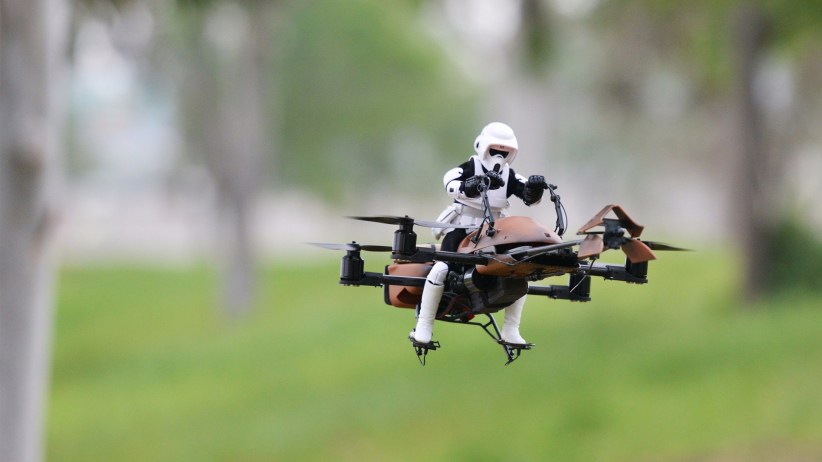Over the last 3 years, we’ve seen the stock of drones rise like rockets. Indeed, drones have transitioned from expensive toys comparable to radio-controlled helicopters to powerful tools capable of changing current and future business models. This post will elaborate on two novel applications of this exciting new technology.
Flying Cameras:
The technology’s impact on the photography industry has been nothing short of spectacular. In a sector that has long been dominated by professionals with large capitals, drones have played a role very similar to the one played by the introduction of the digital camera, which democratized photography by considerably cutting the entry price for cameras. This is where drones step in:
“Until just a few years ago, the pursuit of aerial photography was mostly limited to the military, dedicated hobbyists, and people with access to full-size aircraft.” – Time, 2018
Drone technology has slashed the entry barriers to aerial photography. While this is good news for video producers as it allows them to create high-quality aerial shots at a fraction of the price. This could prove to have a strong effect on the photography and film industry as hobby practitioners now possess the ability to rival bigger competitors. However, the implications for mainstream consumers are just as interesting: The availability of affordable drones empowers consumers and allows them to engage in an art form that until then had been reserved to professionals. As such hobby-photographers and YouTube content creators can considerably improve the quality of their art, thus providing society with increasingly qualitative and compelling content.
Healthcare:
In the field of healthcare, drones again have the potential to become a game-changing force. A drone’s ability to cover long distances without being interrupted by traffic leads many to believe that it represents the future of delivery and a few companies are already working on promising applications in the healthcare industry, where the fast delivery of emergency medical supplies can mean the difference between life and death.
Consequentially a number of companies have been trying to use this technology to save peoples’ lives: Zipline, a San-Francisco-based start-up has been using drones to deliver critical medical supplies to rural areas that were difficult to serve with traditional delivery methods. TU Delft, on the other hand, studying the use of drones to deliver first aid equipment on the spot and that drones carrying defibrillators were able to arrive on location 16 minutes before emergency services, a number which in this context could very well save someone’s life!
Sources:


Hi Yannis,
A very interesting and promising subject. Drones are indeed becoming more important every day. Not only for businesses to make more money, but also to help people who are in danger. I guess there is a really promising road ahead of the drones. you mentioned healthcare and delivering defibrillators already. I truly believe that they will play a significant role in the future to provide food and medicines to those areas attacked by tsunamis or hurricanes for example. When the roads are closed, the air is the only way to reach these destination. Lets hope it will!